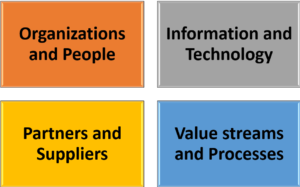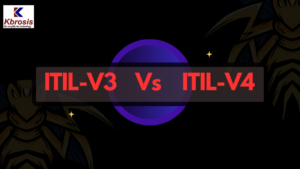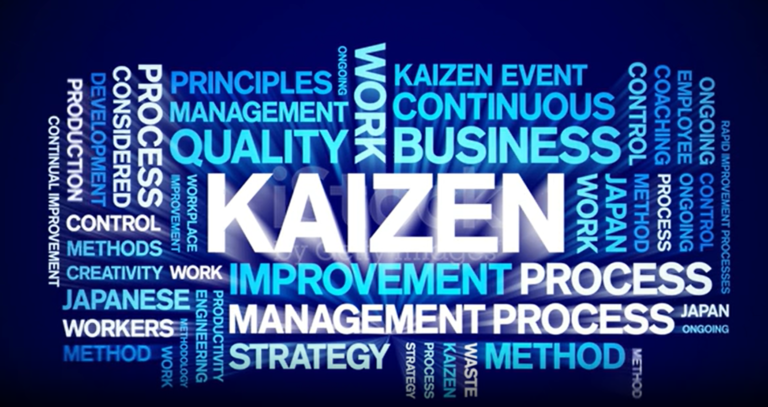ITIL-Information Technology Infrastructure Library, is a broadly known for ITSM framework that provides best practices for IT service management. It defines a set of practices, Guidelines and processes to help organizations align their IT services with their business needs. ITIL v4 is the latest version of the ITIL framework, released in 2019.

Four Dimensions of Service Management Model
ITIL 4 outlines four dimensions of service management, from which each component of the SVS should be considered. The four dimensions are:
- Organizations and people,
- Information and technology,
- Partners and suppliers
- Value streams and processes

Organizations and People
This is for the structure, culture, and capabilities of the organization, as well as the individuals involved in delivering and supporting IT services. It includes factors such as:
- Roles & Responsibilities
- Skills
- Competencies
- Organizational culture
Information and Technology
This dimension emphasizes the information and technology support for delivery of IT services. It includes
- Data
- Knowledge
- Information systems
- Infrastructure.
It also covers areas such as:
- Data management,
- Knowledge management,
- Information security
- Technology infrastructure.
Partners and Suppliers
Most organizations hire/depends on third party resources and vendor to deliver certain part of their services. So It requires to managing relationships with external service providers, suppliers, vendors, and other partners. It includes activities with external parties such as:
- Supplier management
- Vendor coordination
- Contract management
- Service integration
- effective collaboration
- clear communication
- Robust governance
Value Streams and Processes
It describes the workflows, activities, and processes to involved to delivering value addition to the customers. It includes the end-to-end service delivery processes and the value streams. It highlights the need for effective processes, automation, integration, and coordination across the entire value chain.
Key ITIL Processes (ITIL-V3 vs ITIL-V4)
If we talk about ITIL-V3, then mostly key processes are part of their IT service management practices. It’s help organizations to deliver and support IT services effectively & efficiently during project operation and management to achieve agreed SLA (Service Level agreements and SLT (Service Level Targets).
Below are some processes used in ITIL v3:
- Incident Management
- Problem Management
- Change Management
- Release Management
- Service Level Management
- Configuration Management
- Capacity Management
- Availability Management
- IT Service Continuity Management
- Financial Management for IT Services
In ITIL v4, the framework has evolved to emphasize a more holistic and flexible approach to service management. While ITIL v4 does not explicitly define a fixed set of processes like ITIL v3, it introduces a modular approach to practices that organizations can adopt based on their specific needs. These practices can be tailored and combined to meet the organization’s objectives. Here are some key processes (practices) in ITIL v4:
- Incident Management
- Problem Management
- Change Control
- Service Level Management
- Service Request Management
- Knowledge Management
- Continual Improvement
- Relationship Management
- Supplier Management
- Service Configuration Management
Let’s discuss in details
-
Incident Management
Incident Management involve to log a ticket based on Alerts or event and start working to resolve the issue to restore the operation within SLA.
-
Problem Management
It involves analysing re-occurring incident data, conducting root cause analysis, and implementing corrective actions to eliminate problems and reduce the number and impact of incidents.
-
Change Control
It ensures that changes to IT services and infrastructure are implemented in a controlled and minimized risk manner. It involves assessing and approving changes, planning and coordinating change implementation, and successfully completed within scheduled time.
-
Service Level Management
Service Level Management focuses on managing and achieving service levels and service targets with customers.
-
Service Request Management
Service Request Management deals with the management and fulfilment of user requests for IT services. It provides a standardized process for handling routine service requests
-
Knowledge Management
It helps improve service delivery by ensuring that relevant knowledge is available to support incident resolution, problem-solving, and decision-making to maintain KEDB Data.
-
Continual Improvement
Continual Improvement is an all-encompassing process that endorses a culture of continuous enhancement within an organization. It involves regularly assessing, analysing, and identifying areas for improvement in service management processes, services, and outcomes.
-
Relationship Management
Relationship Management is responsible for establishing and maintaining positive relationships between the service provider and its customers. It focuses on understanding customer needs, managing customer expectations, and fostering effective communication and collaboration with multiple vendors.
-
Supplier Management
Supplier Management deals with managing relationships with external suppliers and vendors. It includes activities such as selecting suppliers, negotiating contracts, monitoring supplier performance, and ensuring that suppliers meet agreed-upon service levels.
-
Service Configuration Management
Service Configuration Management (also known as Configuration Management) focuses on maintaining accurate and up-to-date information about configuration items (CIs) within an organization’s IT infrastructure. It involves identifying, recording, and managing CIs, establishing baselines, and controlling changes to ensure the integrity and availability of CIs.
Comparison between ITIL-V3 and V4
If we compare both ITIL-v3 and ITIL-v4, then these are two different versions of the ITIL framework. Although there are some similarities between these two versions but at the same time there are also significant differences in terms of structure, focus, Principle and approach as well.

| Process | ITIL-V3 | ITIL-V4 |
| Structure | ITIL v3 is organized around a five-stage Service Lifecycle, containing of Service Strategy, Service Design, Service Transition, Service Operation, and Continual Service Improvement | ITIL v4 introduces the Service Value System (SVS) as the core framework. The SVS is a more holistic and flexible approach that integrates various components, including the Service Value Chain, guiding principles, practices, and the four dimensions of service management. |
| Focus | It’s focuses on the lifecycle of IT services, with an emphasis on process-oriented and sequential stages. | It’s more to value-oriented approach. It emphasizes the co-creation of value with customers, the alignment of IT services with business objectives |
| Guiding Principles | It’s does not explicitly define guiding principles. | It’s introduces seven guiding principles that serve as the foundation for adopting and adapting ITIL practices. These principles include focusing on value, starting where you are, progressing iteratively with feedback, collaborating and encouraging visibility, thoughtful and working holistically, keeping things simple, practical, optimized and automated |
| Practices | It’s provides a complete set of 26 processes (Incident Management, Change Management, and Problem Management, which are broadly implemented by organizations). | It’s introduces a modular approach to practices, with 34 practices categorized into general management practices, service management practices, and technical management practices. |
| Continual Improvement | Continual Service Improvement (CSI) is a stage within the ITIL v3 lifecycle and focuses on ongoing improvement of IT services. | Continual Improvement is combined throughout the ITIL v4 framework. It accentuates a culture of continual improvement and inspires organizations to regularly evaluate and enhance their practices, services, and outcomes. |
| Digital Transformation | It’s does not clearly address digital transformation or emerging technologies | It’s distinguishes the importance of digital revolution and the incorporation of emerging technologies. It contains new practices and concepts that address the challenges and opportunities presented by digitalization, such as Agile, DevOps, and Lean principles. |
| Service Lifecycle vs. Service Value Chain | It’s defines the Service Lifecycle, which consists of the five stages mentioned above. Each stage has its own set of processes and activities | It’s replaces the Service Lifecycle with the Service Value Chain (SVC). The SVC comprises interconnected activities (Plan, Improve, Engage, Design & Transition, Obtain/Build, and Deliver & Support) that create value for customers. It provides a more flexible and iterative approach to service management |
FAQ
Q: What are the key components of ITIL v4?
A: The key components of ITIL v4 are the Service Value System (SVS), the Service Value Chain, the four dimensions of service management (organizations and people, information and technology, partners and suppliers, value streams and processes), guiding principles, and ITIL practices.
Q: What are the guiding principles in V4?
A: V4 introduces 7 guiding principles that provide guidance for adopting and adapting ITIL practices. These principles include focusing on value, starting where you are, progressing iteratively with feedback, collaborating and promoting visibility, thinking and working holistically, keeping things simple and practical, and optimizing and automating.
Q: What are ITIL v4 Process?
A: ITIL V4 includes a set of 34 practices that organizations can adopt and adapt based on their needs. These practices are categorized into general management practices, service management practices, and technical management practices. Examples of practices include Incident Management, Change Control, Problem Management, Service Level Management, and many others.
Read More : https://techblog.kbrosistechnologies.com/
Visit to our site : https://www.kbrosistechnologies.com/
Watch more Video https://www.youtube.com/channel/UCpcd6IshE1caAbf9EdJd3gw


